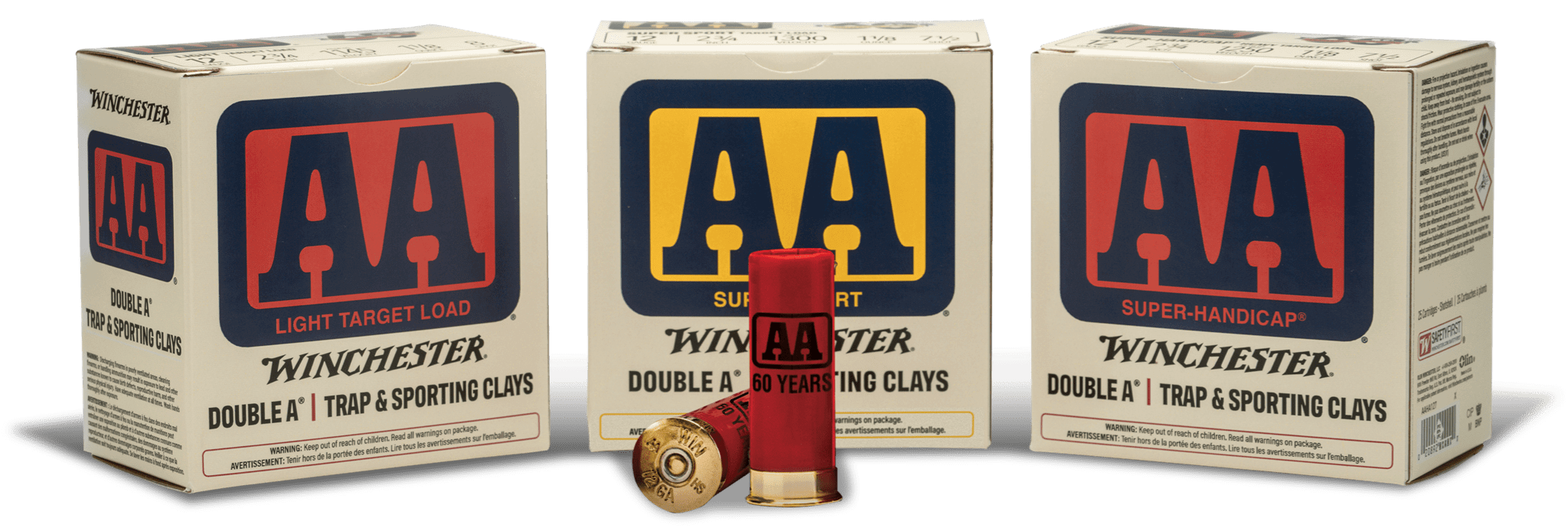Ideas for Setting a Shooting Range Near Your Home
At some point as a gun owner, you are going to need a range.
If your local range is often closed, or travel is cumbersome, there are options. Building a home range is a viable alternative! We’re going to look at home range ideas and concepts to help you get you more time on the range.
Safety first
Make safety a main concern. Appropriate backstops or berms are a must. Your physical safety, that of others around you, and following applicable laws related to shooting firearms is the very first set of details you need to consider.
Country life often means that you can shoot on your own property. If you don’t have property, friends and family who do are great friendships to foster. Simple home ranges that the entire family or your friends and firearms family network can enjoy means more learning and opportunities for all.
Shotgun
Shotgun shooting might be the most easily accessible for those on the edges of civilization - you just need a field or the side of a large lot with space to shoot. Birdshot pellets do not travel as far as a bullet, making a shotgun shooting area easier to implement on your own property.
We use the top of a hill on our land for shotgun clays because we can get a great field of shooting as targets fly out from the thrower. The grassy field even means any missed clays are potentially recoverable, and we can try again.
If you look at your local trap or sporting clay range, you will understand that shotgun shooting with birdshot has fewer concerns about the safety of others. Your trap field or clay area can literally be the side of a yard or field without any houses, roads, etc. nearby.
You don’t need a special backstop or berm, unless you decide to shoot Buckshot or slugs - and those should be treated like pistol and rifle rounds. For comparison’s sake, a 00 buckshot pellet will make a hole about the size of a 9mm. A shotgun slug is a very powerful projectile that you want to treat like a close-range rifle round. It’s a large diameter with a lot of power. It just does not travel as far as a rifle round - this is why slugs are used in many hunting areas that have people close by.
To sum up, shotguns with birdshot = very easy to shoot without lots of acreage. Shotguns with slugs or buckshot = treat them like pistols and rifles.
Pistol
Pistol is going to be the next simplest firearm to set up a home range for. You can use a berm or backstop, or even bullet trap – see, bullet trap. One of the simplest ways to shoot a pistol on your home range is to find a location with a natural hill or berm behind it.
Our shooting area was a natural hill, and over time, we built the berm higher to create a very safe shooting location. We also turned it into a U-shaped berm by adding earth to the sides of the back berm. This means that we can shoot at targets without worrying about “splatter” from projectiles breaking apart when they impact steel. This also helps contain any debris that could otherwise travel into the wall of our barn or outside of the contained “bay” that the berm creates.
For pistol targets, we have everything from steel to paper. To mount paper targets, simple stands can be purchased or a permanent mounting solution like a wooden frame can be used. Sometimes it’s fun to get soda bottles from a dollar store or leftover garden produce that didn’t make the cut for consumption. Whatever target you use, set a safe distance to shoot it from.
Rifle
The firearm that you want to practice the most diligence with when creating a home range is the rifle; simply because the projectiles can travel further and carry more energy. Ensuring that you have a great backstop or berm is necessary. You can even double up. If you say, use railroad ties and dirt, you can still use a log for holding the targets, and save the wear and tear on your railroad ties.
We have a place to shoot 100 yards and zero our rifles, which means a constant ability to chronograph ammunition and zero rifles, no matter the weather or lighting. We dug a backstop and shoot into a large log. This ensures that the rounds are contained, and there are two layers of backstop, so that as the log gets shot, any rounds that might pass through still have the earthen backstop to absorb them. Doubling up helps maintain the berm AND gives us two layers of stopping to contain projectiles.
Options and Considerations for Berms and Targets
As discussed above, the most common option for backstops in an earth berm. You will also see railroad ties or log walls, manufactured ballistic blocks (indoor ranges use a material like this on their backstop), or bullet traps. A bullet trap is often more of an indoor device for targets set in specific locations. For outdoor shooting like plinking, action / tactical bays, and full-bore rifles, an earthen berm is the general material you will see used.
Steel targets are ideal for your home range, since you can hear and see impacts, and they don’t require walking to the target to see your hit. Make sure that you use AR500 steel or rifle rated steel when you shoot them with anything other than a 9mm or .22 rimfire.
There are actually rimfire targets that will react better than a heavy steel target if you choose to shoot .22s. Those targets should never be shot with anything larger than rimfire, or you risk ruining the target.
Targets that you shoot at home will tend to be paper, printed options you can find online and print from your home computer, or found objects. Just be careful about shooting anything that can shatter or fragment and send pieces back towards the shooter.
Know your target and beyond. Building a home range forces you to think about “your target and beyond”. It makes you consider your projectiles and where they are going, and putting them downrange in a way that keeps you and others safe. Involving your family in the planning of a home range also helps ensure that they understand the rules of firearms safety.
Materials to avoid downrange: concrete, rocks, glass, and metal that’s not designed to be shot. All of these materials can cause fragments of the projectile (jacket or core material) to break apart and fly back at you or sideways into places you don’t want it. It’s never a good idea to have metal downrange. (Steel targets aside. And even with those, we don’t shoot the non-target parts of stands and supports because it can damage our targets.)
Safe distances are another facet of setting up a home range: how close can you be to a target?
- Paper / cardboard - point blank to as far as you can hit it.
- Wood or composites / plastic - from several yards to long-range.
- Steel - at least 10 yards is a safe rule to establish.
- Always consider the angle of the steel and what you are shooting at it. Projectiles generally deform when they impact steel, and this means you do not want to set them so that the “splash” can deflect from the sides and impact things you care about: people, cars, structures, other targets. It’s why sets of steel targets should be placed at staggered distances/depth, so the splash from one target does not “chew up” and damage another. Usually this is a concern for steel targets using wooden posts or stands.
*NOTE* Take care of your steel! Good steel that has not been abused (no pitting or pockmarks) will be safer for you and anyone using your home range. Steel that has pitting, cracks, divots...all of those things can cause fragmented pieces of the projectile to deflect off the target in unpredictable ways. That’s why many ranges have rules about steel-core projectiles or certain ammo. Save those restricted types of ammo for your paper targets in front of a dirt berm.
Ammo for Your Home Range
After you set up your home range, you need ammo and a gun. The correct ammo for plinking and practice is something to consider. You wouldn’t shoot your long range rifle ammo at paper 10 yards away. Similarly, personal defense rounds which are more costly are not ideal for practice.
An all-purpose ammo is best for practice and plinking, saving the high-end rounds for their specific purposes. To train and practice marksmanship fundamentals, a recreational round is sufficient and affordable. Having some personal defense ammo available to get a feel for how it shoots through your personal defense firearm and where it impacts is a good idea too!
Rules
Last, establish rules for your home range: make sure eye and hearing protection is worn at all times. Make sure anyone that you allow to shoot with you understands the rules of firearms safety and follows them. Establish a basic “firing line” and downrange direction. Set up permanent or temporary tables or benches from which you can shoot, zero, plink, and otherwise enjoy your time on the range. Designate a “Range Officer” who is responsible, and ensure that everyone understands their job is to back them up and call “stop” should anything look unsafe. For novice shooters, safety needs to be ever present in your mind!
Wrapping it Up
If you live in an area that restricts shooting actual firearms, consider air-soft, BBs and air guns and how you can practice with them. Containing those small and less powerful projectiles is less labor intensive, and you can still enjoy a good plinking session. A simple plywood backstop works for BBs and air rifles. So don’t feel like you have to miss out on having a “home range” just because you live in an urban area. The basement or garage can work. This is also a great activity to teach kids about the basics of firearms safety, sight alignment, and trigger control.
Whatever type of home range you build, make sure you follow Winchester’s blog for more ideas on ways to enjoy your time on the range!






